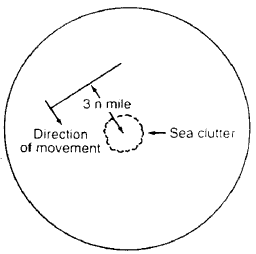 |
Science Frontiers ONLINE No. 122: Mar-Apr 1999 |
|
|
Unusual Wave
January 14, 1998. Indian Ocean. Aboard the m.v. Oriental Bay, enroute Port Klang to Suez.
"At 2230 UTC the vessel was on a course of 269� at 23 knots when a line was observed on the radar at a range of 3 n mile, travelling from northwest to southeast at an estimated speed of 15 knots, as indicated on the sketch. The line was observed to be a wave.
"It was about 10 minutes after the first sighting that the vessel passed over the wave, which was approximately 4 m [13 feet] high, and she heeled 5� to port while the autopilot deviated 3� off course. At the time of the event, there was a low swell of 1.0 m from 320� and the sea was 0.5 m from 360�. The current was estimated to be 2.5 knots running to the west."
(Talbot, A.P.; "Unusual Wave," Marine Observer, 69:10, 1999.)
Comment. The wave could not have been a tsunami because it was travelling too slowly. Tsunamis travel at jet speed and are rarely visible on the deep ocean. Since the wave was solitary and four times the height of the gentle swells, it is unlikely that it was a chance combination of the swells. Most likely it was a surface manifestation of an internal wave that had been reflected from an undersea obstacle like the continental shelf.
